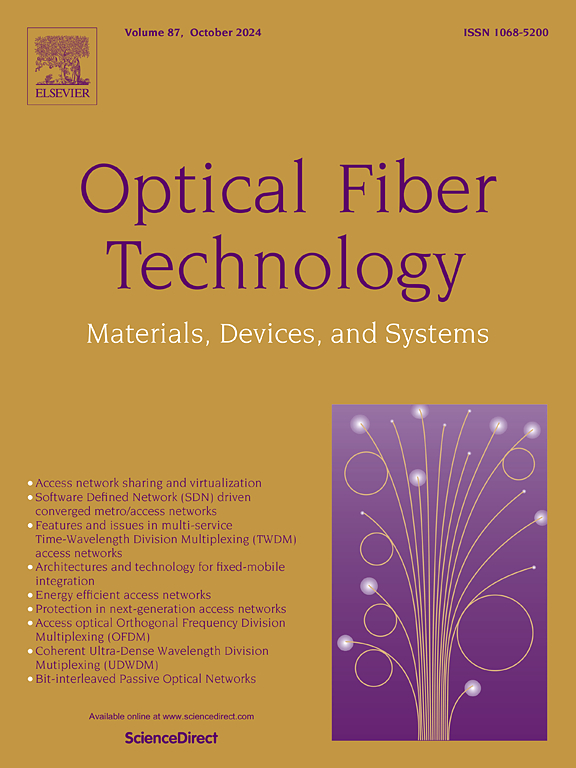Photoacoustic methane detection assisted by a H2-filled anti-resonant hollow-core fiber laser
IF 2.6
3区 计算机科学
Q2 ENGINEERING, ELECTRICAL & ELECTRONIC
引用次数: 0
Abstract
The anti-resonant hollow-core fiber (ARHCF) lasers in the near-infrared (NIR) and mid-infrared (MIR) spectral domain show a great potential for spectroscopy and high-resolution gas detection. In this work, we demonstrated the generation of a frequency-comb-like Raman laser with high pulse energy spanning from ultraviolet (UV) (328 nm) to NIR (2065 nm wavelength) based on a hydrogen (H2)-filled 7-ring ARHCF. The H2-filled ARHCF is pumped with a custom-laser at 1044 nm with ∼ 75 μJ pulse energy and ∼ 3.7 ns pulse duration. Through stimulated Raman scattering process, we employed the sixth-order rotational Raman Stokes located at ∼ 1650 nm as a case example to demonstrate how the developed high-energy and narrow-linewidth laser source can effectively be used to detect CH4 in the NIR-II region using the photoacoustic modality. We reported the efficient detection of CH4 with sensitivity as low as ∼ 550 ppb with an integration time of ∼ 40 s. In conclusion, the main goal of this work is to demonstrate and emphasize the potential of the gas-filled ARHCF laser technology for compact next-generation spectroscopy across different spectral regions.
求助全文
约1分钟内获得全文
求助全文
来源期刊

Optical Fiber Technology
工程技术-电信学
CiteScore
4.80
自引率
11.10%
发文量
327
审稿时长
63 days
期刊介绍:
Innovations in optical fiber technology are revolutionizing world communications. Newly developed fiber amplifiers allow for direct transmission of high-speed signals over transcontinental distances without the need for electronic regeneration. Optical fibers find new applications in data processing. The impact of fiber materials, devices, and systems on communications in the coming decades will create an abundance of primary literature and the need for up-to-date reviews.
Optical Fiber Technology: Materials, Devices, and Systems is a new cutting-edge journal designed to fill a need in this rapidly evolving field for speedy publication of regular length papers. Both theoretical and experimental papers on fiber materials, devices, and system performance evaluation and measurements are eligible, with emphasis on practical applications.
 求助内容:
求助内容: 应助结果提醒方式:
应助结果提醒方式:


